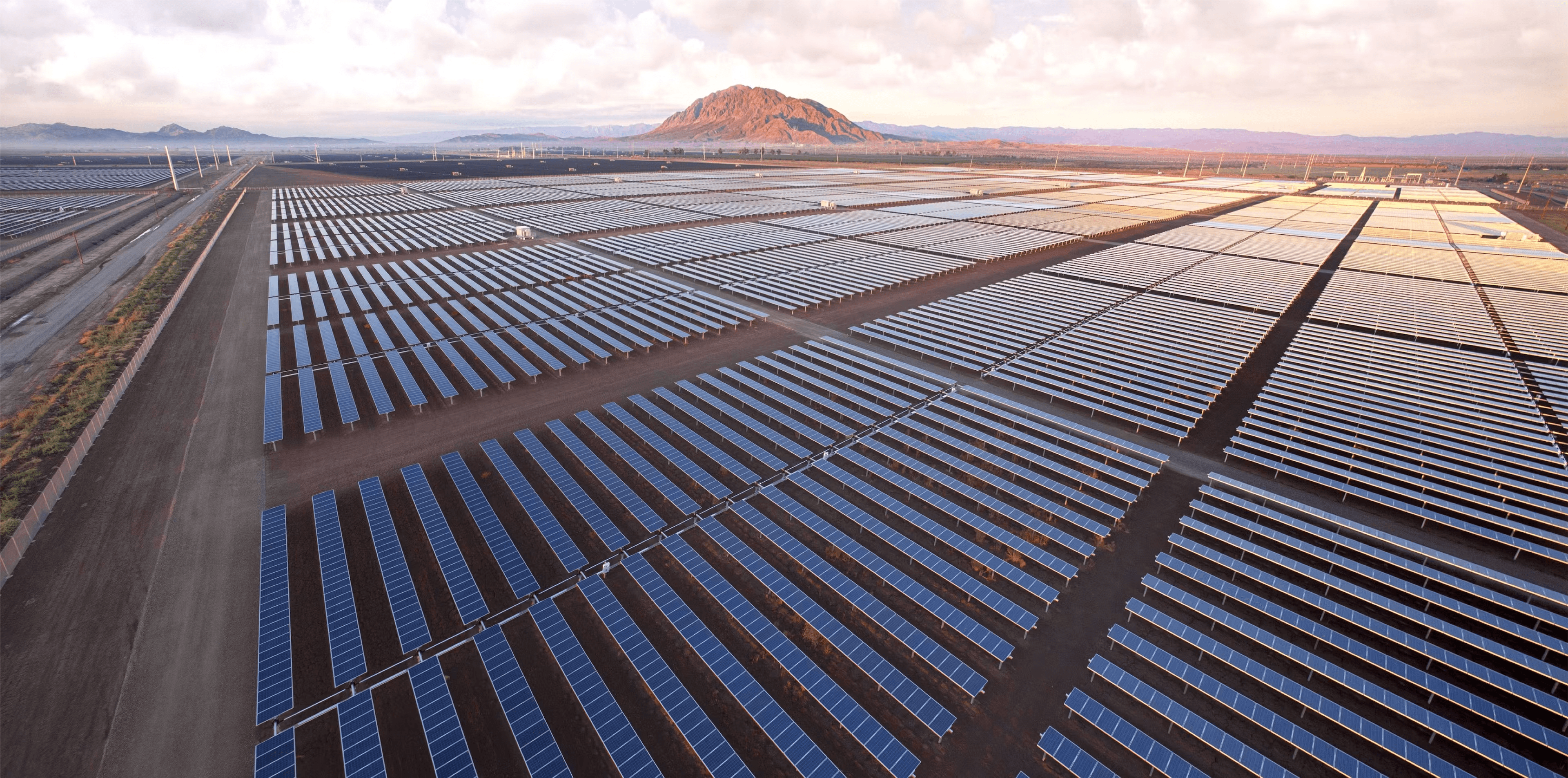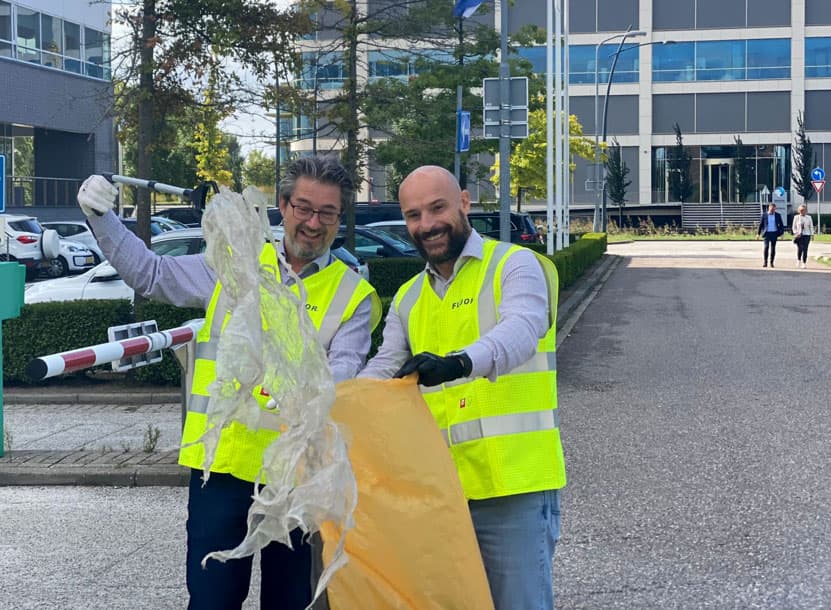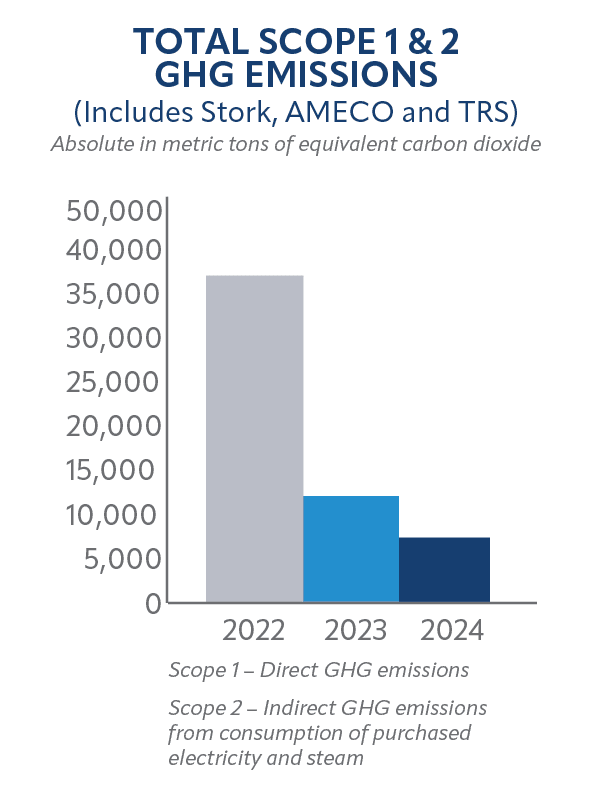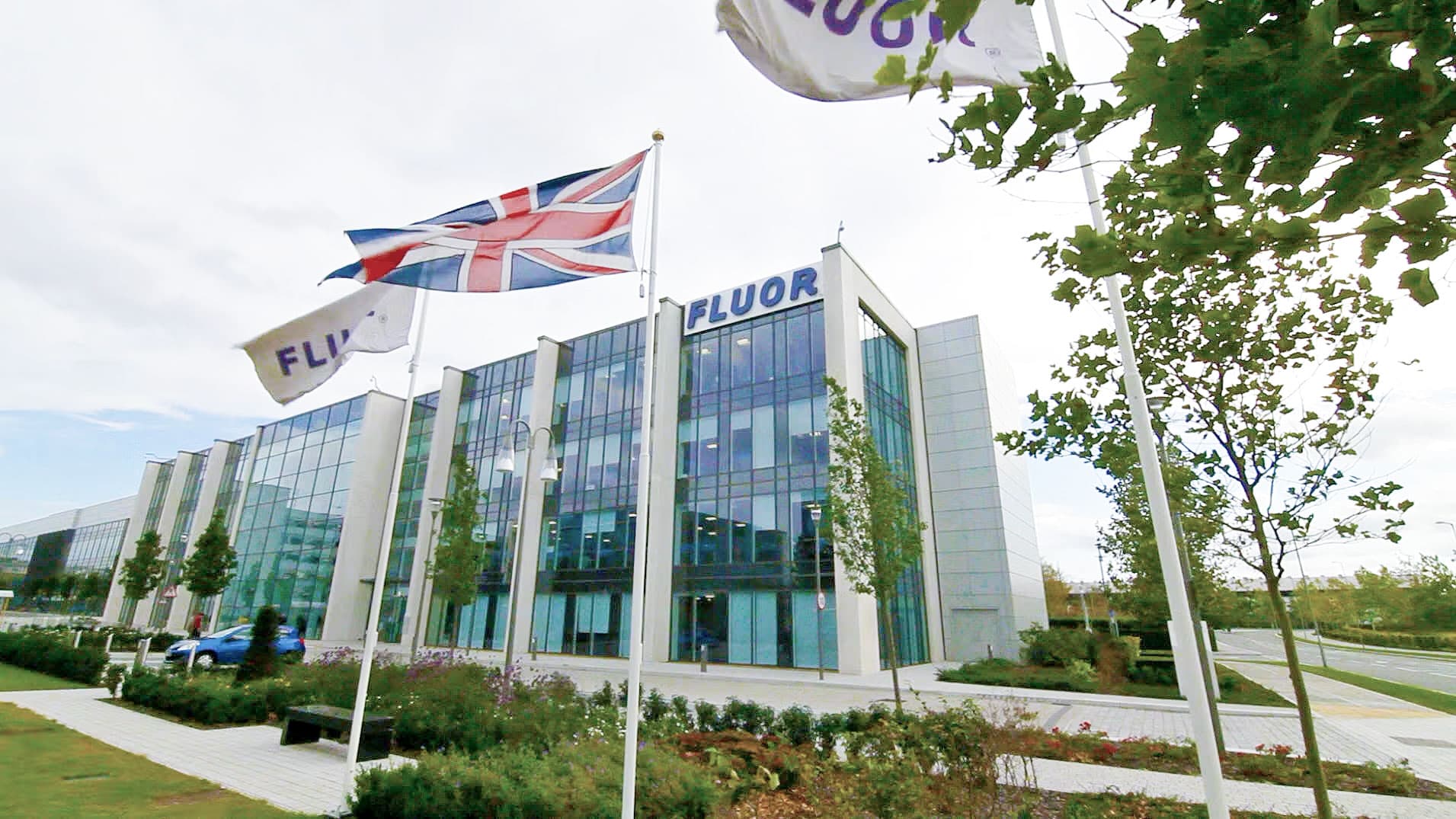

Environment
Longstanding Dedication to Environmental Stewardship
Sound environmental practices are at the heart of Fluor's commitment to sustainability and social responsibility. We conduct business to meet the needs of our clients and other stakeholders today, while protecting and enhancing the natural resources that will be needed tomorrow.

Carbon Footprint
We established our global carbon footprint in 2006. Our scope includes emissions produced within offices, vehicle fleets at those offices and air travel. It excludes emissions produced at client sites and other Scope 3 emissions. We are currently evaluating processes to expand our reporting boundary. This expanded boundary will include project sites and other Scope 3 emissions categories.
We follow the Greenhouse Gas (GHG) Protocol for inventory over which we maintain operational control. The basic unit of measure used throughout the GHG inventory is metric tons of equivalent carbon dioxide (tCO2e).
Emission sources in our current GHG inventory include electricity, heat and steam; stationary fuel consumption for our facilities; refrigerants used in building cooling systems; fleet vehicle fuel consumption; and emissions associated with business-related air travel. For each source, GHG emissions are quantified in the inventory for the following, if applicable: carbon dioxide, methane, nitrous oxide and any hydrofluorocarbon refrigerants reported.
In 2024, our combined Scope 1 and Scope 2 market-based GHG emissions totaled approximately 6,745 tCO2e, which was a 44% reduction from our 2023 total (before carbon offsets were applied).
In 2023, Fluor achieved our Net Zero 2023 commitment, reducing our operational Scope 1 and Scope 2 greenhouse gas (GHG) emissions to net zero as defined in our Greenhouse Gas Inventory Management Plan. This focus excluded Scope 3, which consists of indirect GHG emissions, such as air travel.

To achieve Net Zero 2023, we used a combination of the following strategies:
We reduced energy consumption at our offices.
We purchased low- or zero-carbon energy bundled with energy attribute certificates (EACs), which then were retired.
We purchased and retired unbundled EACs to address Scope 2 electricity emissions. These EACs were sourced within the same grid region or as close as possible to the Fluor operations to which they are applied.
We invested in a high-quality carbon offset project to neutralize our Scope 1 and Scope 2 GHG emissions.
Fluor selected high-quality offset projects that meet the criteria of additionality, permanence, leakage and double counting as described in the GHG Protocol.
Our objective is to reduce our reliance on unbundled EACs and carbon offset credits as we maintain our carbon neutral position as we transitioned from net zero. Our global teams will continue to reduce emissions, including relocating to energy-efficient buildings, implementing energy reduction initiatives and signing renewable energy contracts.
Conservation of Resources
Our offices reduce waste by donating used furniture, office equipment and supplies, carpet and computers to schools, homes for elderly and non-profit organizations. During renovations, furniture and materials are reused whenever possible. Our waste reduction efforts also include duplex printing and using durable, reusable crates. We recycle paper, cardboard, batteries, mixed/commingled and assorted waste.
We also track the amount of water we purchase and the amount that we conserve through initiatives, such as deployment of low-flush valves, installation of automatic faucet sensors and commodes and low-flow shower heads.
Our energy reduction initiatives include installing solar panels, replacing lighting with light emitting diode (LED) lights, changing the operating time on air conditioning units, making modifications to building heating systems, switching to electric vehicles and behavioral changes. Fluor's energy consumption also reflects the volume of activities performed during a given fiscal year.
In 2024, we continued to minimize our energy consumption, relocating existing offices to energy-efficient buildings and upgrading fleet vehicles. From 2023 to 2024, we experienced a reduction in approximately 37,540 gigajoules in direct energy consumption for stationary equipment, approximately 1 million liters of fuel for fleet vehicles and 29,000 gigajoules in indirect energy consumption associated with electricity.
&w=3840&q=75)
Sustainability in Action
Our Farnborough office in the United Kingdom is just one of many of our facilities that are incorporating sustainable practices across the entire site.
A waste-to-energy plant powers the campus, and LED lighting and rooftop solar panels have reduced energy consumption. Single-use plastic is not available. All campus waste is recycled, including turning food waste into pesticide-free fertilizer for local farming, so nothing goes to the landfill. The office’s waste management vehicles are carbon neutral, and the rest of the fleet runs on electricity.
In 2021, the campus reduced its Scope 1 and Scope 2 greenhouse gas emissions to net zero, the first Fluor site to achieve the distinction.
In 2024, the office won a British Safety Council International Safety Award and a Royal Society for the Prevention of Accidents Gold Award for health and safety performance for the ninth consecutive year.

Stewardship in Our Supply Chain
Operating in more than 40 countries around the globe, Fluor takes local spend seriously. We define local content as goods or services procured from suppliers and subcontractors in the same country where the goods are consumed/installed or the services are rendered. Fluor's local commitments in 2024 were $9.5 billion, which was approximately 86% of our total global spend.
We are committed to sustainable procurement practices that help preserve natural resources and reduce our impact on the environment. Environmental due diligence is an integral part of our supply chain practices, particularly when it comes to:
Logistics - We consolidate project cargo, which results in the optimization of voyages and the reduction of our carbon footprint.
Digitalized work processes - By embarking on digital transformation, we are uncovering new opportunities to optimize processes, lower costs, reduce waste and embrace new business models.
Supporting suppliers and subcontractors - We assess their sustainability journeys and advise them to execute in an environmentally responsible manner.
Management of Environmental Data
Our Sustainability Performance Indicator Management System (SPIMS), a web-based data entry software, is used to capture, trend and report Fluor’s environmental data.
Our offices enter data related to electricity, heat, steam, renewable energy, refrigerants, fuel used by fleet vehicles, waste and water. We track commercial air travel on projects and commercial and charter air travel that is not related to projects. We calculate our GHG emissions in accordance with the GHG Protocol.
&w=3840&q=75)
Climate Action Plan
The Climate Action Plan is our framework for measuring, tracking and reducing GHG emissions. It outlines our GHG emissions strategy and inventories, boundary conditions, emission reduction efforts and data management processes.
The plan addresses GHG emission reduction actions that support our emission reduction goals and demonstrates how we support the aspirations of third parties, such as environmental-related organizations and our clients


Our teams provide the technical expertise needed to scale exciting, new technologies, which will enable the decarbonization of industries and prepare our clients for their own sustainable futures.
Al Collins
Group President, Mission Solutions
Arlington, U.S.